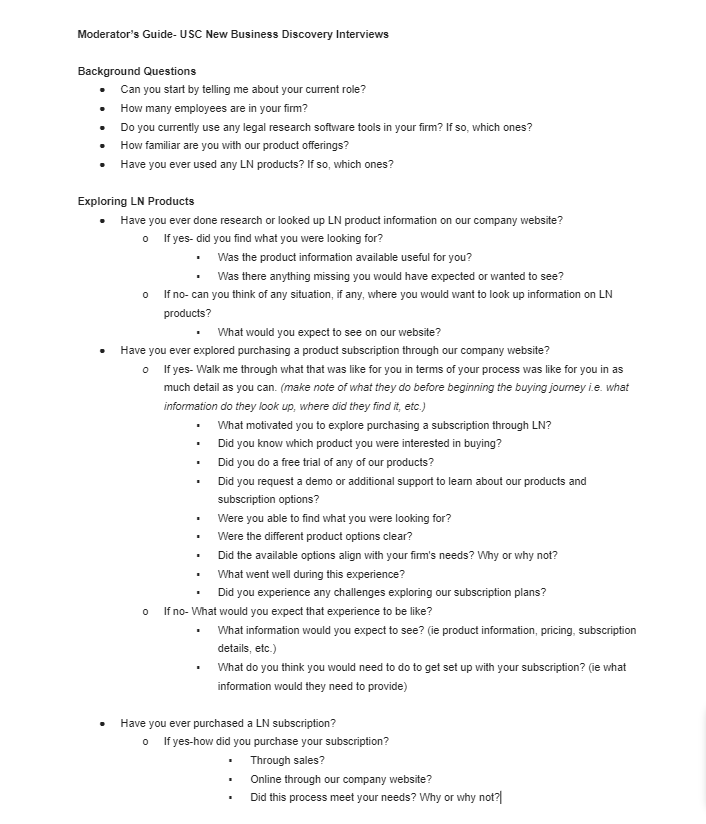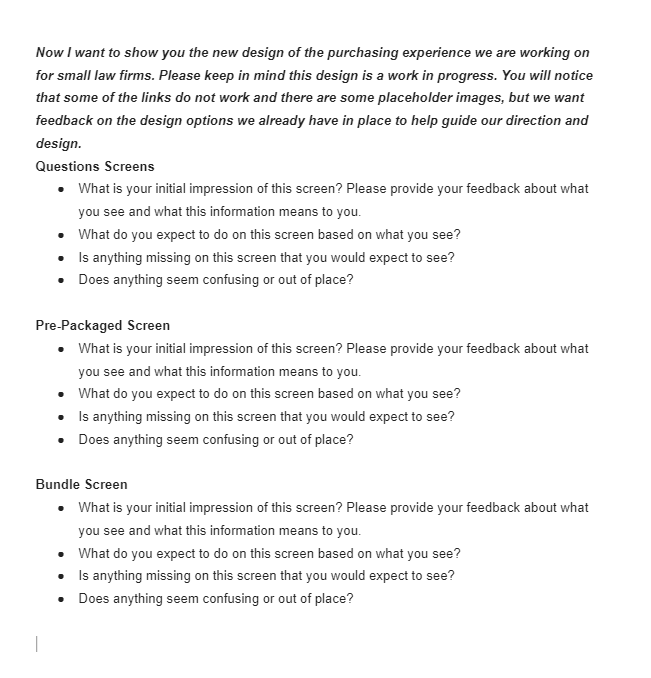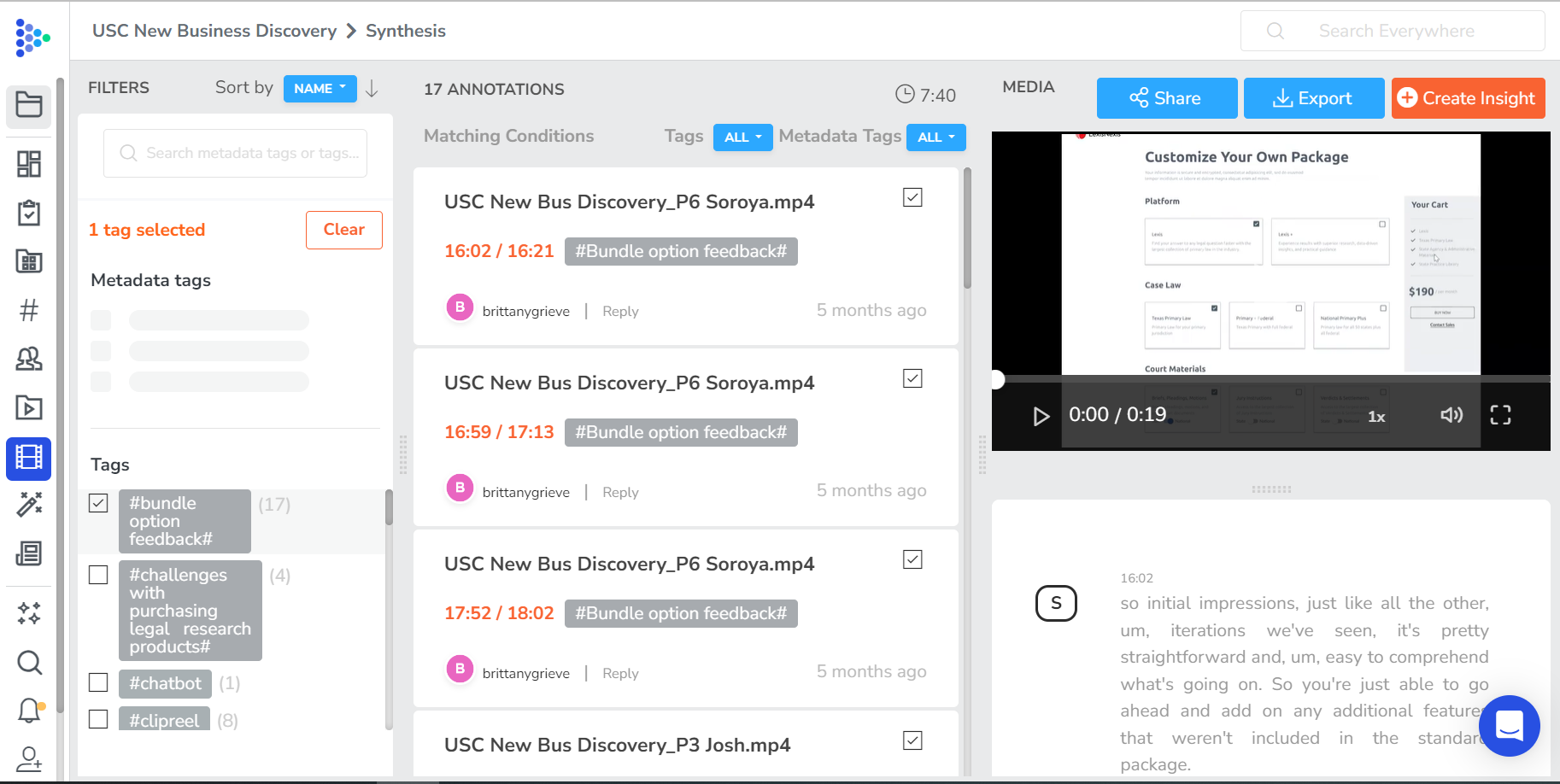LexisNexis E-Commerce Redesign
Background
The unassisted sales channel initiative will allow users to purchase new product subscriptions independently through LexisNexis’s e-commerce channel. The team was interested in understanding what the needs are of new users when exploring and purchasing product subscriptions independently on our company website.
I worked with a cross functional team of designers, engineers, product management, sales and marketing to understand their needs and what they needed to learn about users to begin this large scale initiative for the organization.
Research Problem Statement/Goal(s)
The project team needs to better understand what users need in their buying journey in order to provide an enhanced self-service option to best suit user needs when purchasing product subscriptions independently through our company website.
Goal #1: Learn more about users’ motivations and needs for buying subscriptions through our company website.
Goal #2: Gain initial feedback on the new experience of purchasing product subscriptions including the pre-packaged and bundle options available.
Goal #3: Validate users understanding of our various product offerings and what options are available to them during the purchasing experience.
QUESTIONs/HYPOTHESeS
To begin developing my research test plan, I worked with the stakeholders to understand which questions they needed to answer and what hypotheses needed to be validated with the research findings:
Question 1: Do users understand our various platform and product offerings?
Question 2: What is their process for buying a product subscription? What information do they need to make a buying decision?
Question 3: Does the current sequence of events in the new buying flow align with users needs and expectations? Do they expect to pick between Lexis and Lexis+ after creating bundle selections?
Question 4: Do users expect an instant free trial option as part of their subscription buying experience? If so when would they want this trial during the process?
Hypothesis I: Participants will expect a free trial option as part of their new buyer experience and will want to try a product for free before beginning the buying experience.
Hypothesis II: Participants will want to select their platform (Lexis or Lexis+) after selecting the features of their bundle.
Hypothesis III: Participants will understand the various product options available to them on the website.
research Methods and approach
interviews
To begin the ecommerce experience redesign initiative, I started by interviewing 8 prospective and current customers about their current buying experience for legal products and what they would like to see improved in our new design.
We learned during this initial round of user discovery that prospective customers are interested in having the ability customize their product package so they are not paying for products or features they do not need in their subscription.
concept testing
Next I worked with our design to team to create some early wireframes to test out the concept of allowing users the option to create their own package for their product subscription through our e-commerce channel for feedback to help iterate on the design.
Concept testing further validated prospective customer’s interest in customized package options. We also learned that they need more descriptive details to better understand what each product is and what exactly will be offered in their subscription before they would commit to buying.
usability testing
After iterating on the design based on the feedback of concept testing, the designer created a high fidelity prototype to test the experience of the workflow of selecting a product subscription and purchasing through the e-commerce channel.
Analysis
To analyze the findings, all sessions were recorded live through Zoom and transcribed in Tetra Insights. Then I did qualitative coding of the data to create categories of the findings. Next, I performed affinity mapping to uncover overarching themes to help uncover key insights of user behavior and preferences.
findings and recommendations
After completing the sessions and analyzing the findings, I compiled a detailed report of the findings of each study along with recommendations to address the needs or pain points identified by the participants.
Key Findings:
All participants considered clearly defined pricing, quality of product and an understanding of what's included in their package (ie product, features, content) to be the most important factors in their decision to purchase a product subscription online. Other important considerations participants mentioned were:
Quick, easy process to choose and purchase package.
Ease of use to train and begin using the product.
Flexibility in contact terms (ie duration or ability to terminate) and payment options (month-to-month, annual or deals).
All participants felt the new buying experience was clear and would be easy to use.
Most participants said they would like to buy product subscriptions online through LexisNexis.com.
All participants want to know as much about the options in each package as possible in terms of what each feature is, what is included in the package and all pricing options available to give them the best deal.
If they felt uncertain about what they are getting, the expectation would be talk to support or sales to ask questions or get help in making their decision.
Several expressed concerns about the price of the customized package and the add-ons feeling they were more expensive than what they viewed in the pre-packaged options.
Many participants commented on needing a better understanding of what is involved in the free trial period and what options are available (ie cancel) if they decide the package, they chose is not the right fit for them.
Recommendations:
Clarify what the terms are of the free trial for beginning the subscription process of both a pre-packaged or customized subscription.
Continue providing detailed content explaining what each feature or material is and what exactly is included in each package option.
Continue to define pricing information within the customized package showcasing more affordable options to justify time of completion.
Ensure its clear the chat feature will allow them to talk to a real person to answer questions during the buying process.
Rethink how to edit jurisdiction and firm size after the initial screen to make it stand out more or be more visible as an action item on the screen.
Consider refining pricing details in the add-ons (i.e., applicable discounts) for users who were concerned about adding to the price of their package.
Terms and conditions include a detailed overview of what users are getting and the options available within their subscription.



